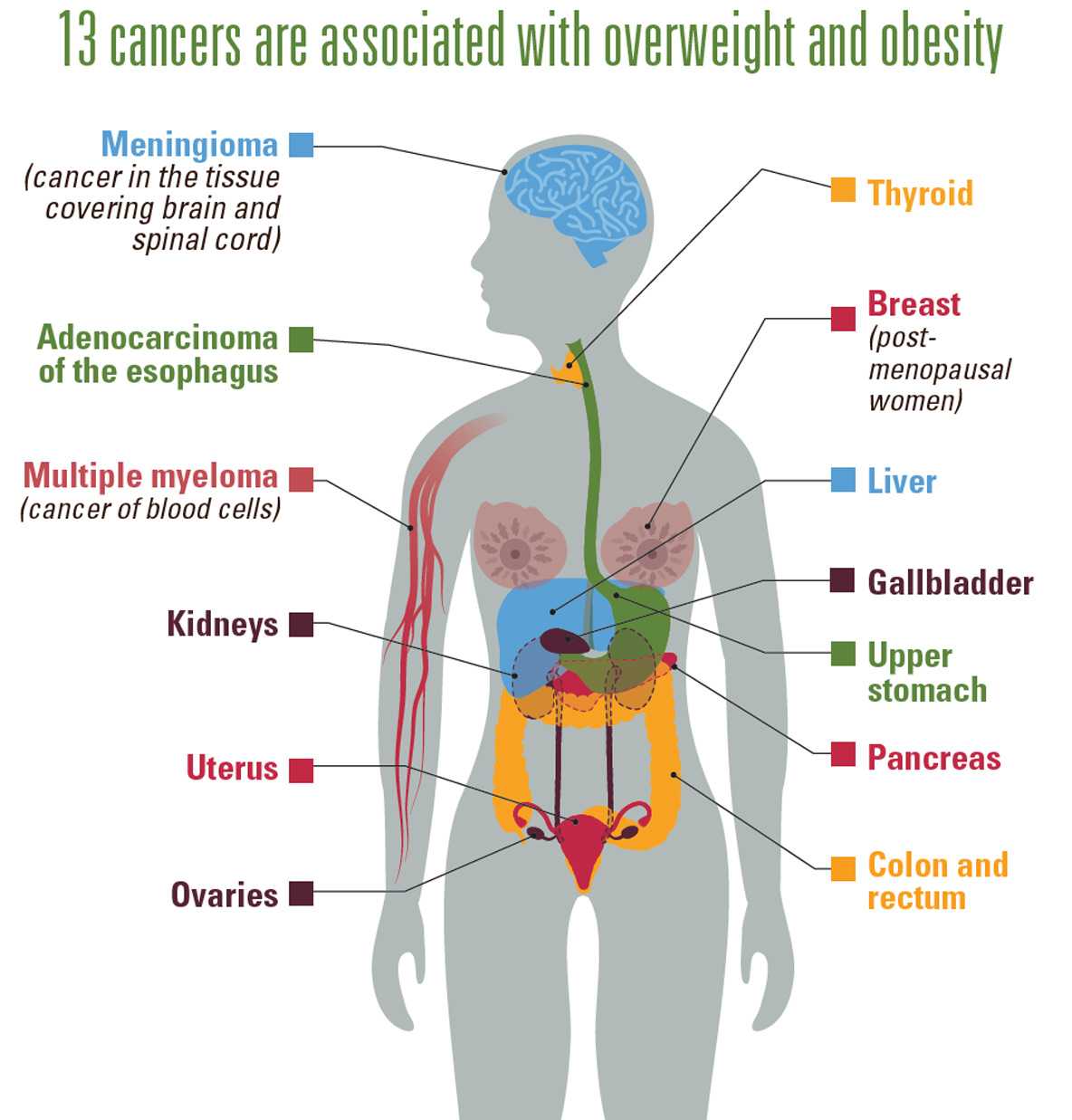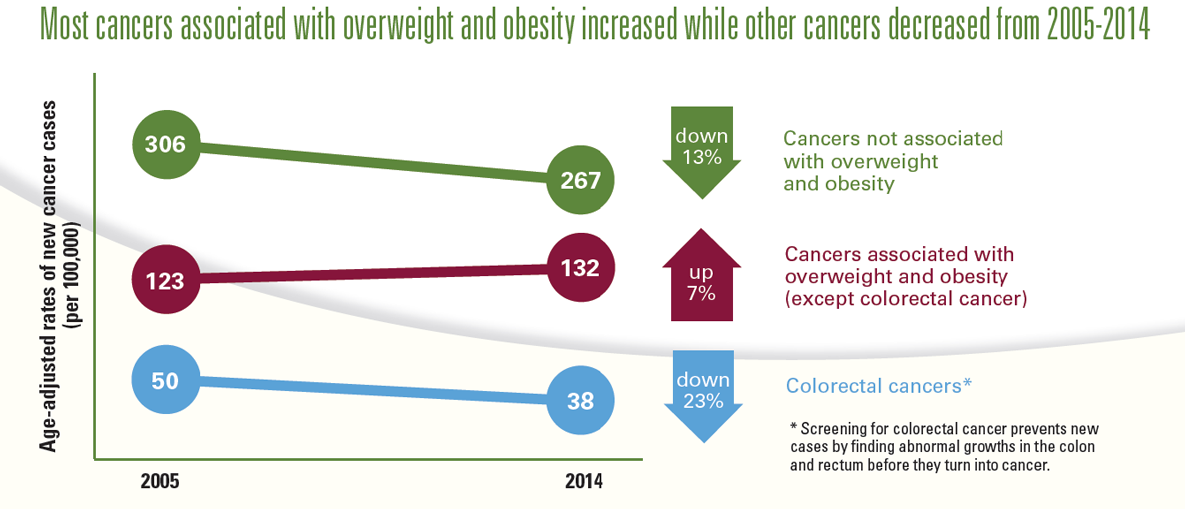Cancer and obesity
Overweight and obesity are associated with cancer

13 Cancers are associated with overweight and obesity
- Meningioma (cancer in the tissue covering brain and spinal cord)
- Adenocarcinoma of the esophagus
- Multiple myeloma (cancer of blood cells)
- Kidneys
- Uterus
- Ovaries
- Thyroid
- Breast (post-menopausal women)
- Liver
- Gallbladder
- Upper stomach
- Pancreas
- Colon and rectum

Most cancers associated with overweight and obesity increased while other cancers decreased from 2005-2014
Age-adjusted rates of new cancer cases (per 100,000)
| Age-adjusted rate of new cancer cases per 100,000 in 2005 | Age-adjusted rate of new cancer cases per 100,000 in 2014 | % change | Description |
| 306 | 267 | Down 13% | Cancers not associated with overweight and obesity |
| 123 | 132 | Up 7% | Cancers associated with overweight and obesity (except colorectal cancer) |
| 50 | 38 | Down 23% | Colorectal cancers* |
*Screening for colorectal cancer prevents new cases by finding abnormal growths in the colon and rectum before they turn into cancer.
Source: US Cancer Statistics, 2017.

What are communities doing?
The CDC’s National Comprehensive Cancer Control Program supports comprehensive cancer control efforts, including environmental approaches that promote physical activity and healthy food options in communities.
In schools and early childhood centers
- Encouraging walk-to-school and bike-to-school programs.
- Supporting quality physical education.
- Increasing healthy food options.
In homes
- Promoting breastfeeding.
- Encouraging families to participate in physical activities together.
- Encouraging families to limit screen time.
In the workplace
- Encouraging stairs.
- Encouraging walking clubs or walking meetings.
- Increasing healthy food options in vending machines and cafeterias.
For all their residents
- Increasing access to walking trails.
- Allowing the community to use school facilities outside of school hours for physical activity.
- Building roads that are safe for all types of transportation to share.
- Working with real estate developers to increase pedestrian-friendly developments.
- Increasing access to farmers’ markets.
- Planting community gardens.
- Promoting community messaging about healthy eating, physical activity, and risks of obesity.
Source: Journal of Community Health, 2016. http://bit.ly/2fwJhWL
- Page last reviewed: October 3, 2017
- Page last updated: October 3, 2017
- Content source:
- Centers for Disease Control and Prevention
- Page maintained by: Office of the Associate Director for Communications (OADC)


 ShareCompartir
ShareCompartir